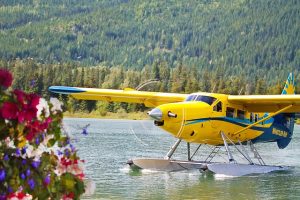
When shopping for paint to use on an airplane, you may come across enamel aircraft paint. It’s commonly used on aircraft engines. Aircraft engines are regularly exposed to moisture. To prevent corrosion, they are painted with enamel aircraft paint. For a better understanding of enamel aircraft paint and how it works, keep reading.
What Is Enamel Aircraft Paint?
Enamel aircraft paint is a type of paint that’s designed for use on airplanes and other aircraft. It differs from other types of paint by hardening. After applying enamel aircraft paint to an engine or any other part of an airplane, it will begin to cure. Once the enamel aircraft paint has fully cured, it will form of a hardened shell over the respective engine or part.
How Enamel Aircraft Paint Works
Enamel aircraft paint works by forming a protective barrier over the engine or part with which it’s used. Most aircraft engines are air-cooled. Therefore, they are regularly exposed to the surrounding air. Over time, exposure to the air — specifically the moisture in the air — can cause them to corrode. The metal from which an aircraft engine is made may begin to oxidize and corrode.
With a coating of enamel aircraft paint, aircraft engines will be protected from corrosion and other forms of environmental damage. Enamel aircraft paint is designed specifically to harden as it cures. It will create a hard and transparent barrier over the aircraft engine. As long as this barrier remains intact, moisture won’t be able to reach the underlying metal from which the aircraft engine is made.
Benefits of Enamel Aircraft Paint
Why should you use enamel aircraft paint exactly? Being that it’s designed specifically for airplanes, you can rest assured knowing that it will last. Other types of paint may degrade — especially when exposed to moisture and sunlight. Enamel aircraft paint, though, doesn’t suffer from this problem. It will last a long time while protecting the engine or part with which it’s used.
Enamel aircraft paint is also heat resistant. Aircraft engines produce heat. When exposed to the heat of an aircraft engine, other types of paint may quickly degrade. Enamel aircraft paint, however, offers a superior level of heat resistance. It can withstand the heat of an aircraft engine without chipping, flaking or otherwise degrading.
Most types of enamel aircraft paint are air-cured. After applying them, you just need to wait. The enamel aircraft paint will cure via the air, after which it will form a hardened protective barrier.



